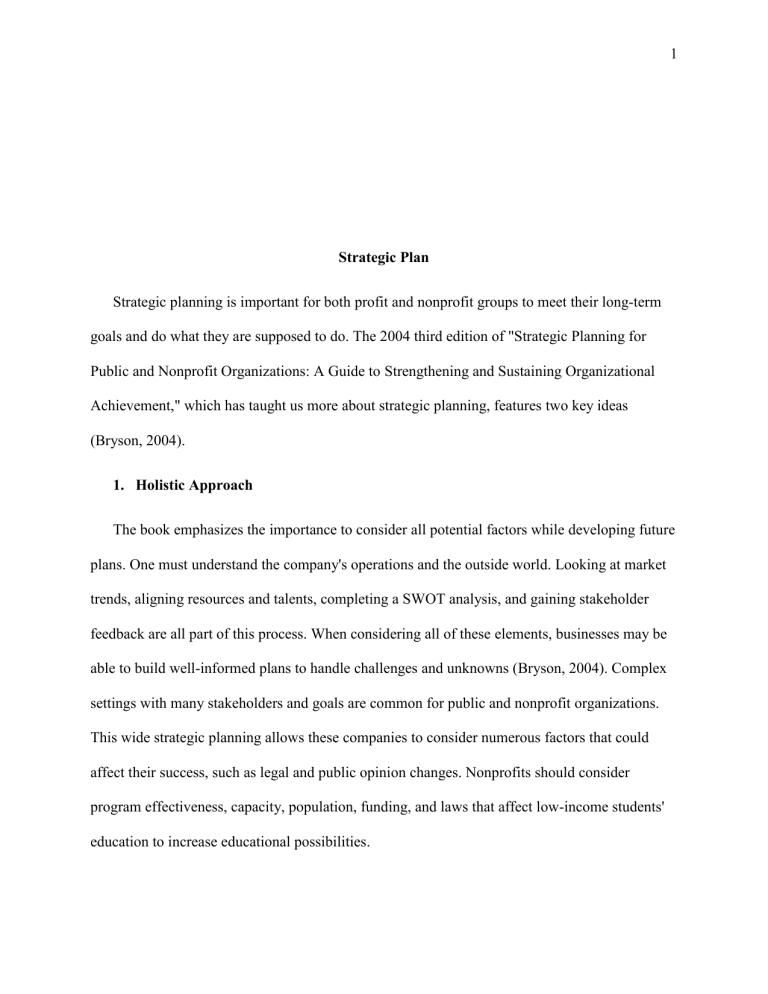Strategic Plan: Holistic Approach to Organizational Achievement
advertisement

1 Strategic Plan Strategic planning is important for both profit and nonprofit groups to meet their long-term goals and do what they are supposed to do. The 2004 third edition of "Strategic Planning for Public and Nonprofit Organizations: A Guide to Strengthening and Sustaining Organizational Achievement," which has taught us more about strategic planning, features two key ideas (Bryson, 2004). 1. Holistic Approach The book emphasizes the importance to consider all potential factors while developing future plans. One must understand the company's operations and the outside world. Looking at market trends, aligning resources and talents, completing a SWOT analysis, and gaining stakeholder feedback are all part of this process. When considering all of these elements, businesses may be able to build well-informed plans to handle challenges and unknowns (Bryson, 2004). Complex settings with many stakeholders and goals are common for public and nonprofit organizations. This wide strategic planning allows these companies to consider numerous factors that could affect their success, such as legal and public opinion changes. Nonprofits should consider program effectiveness, capacity, population, funding, and laws that affect low-income students' education to increase educational possibilities.






